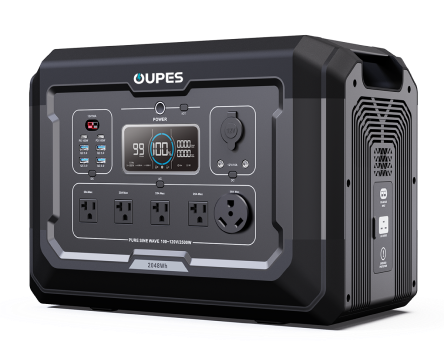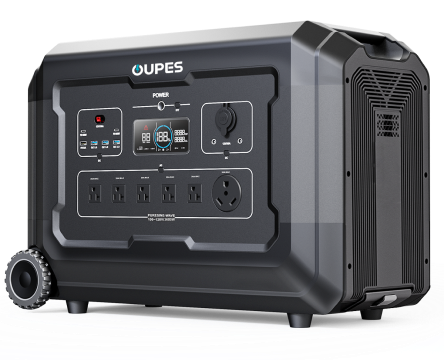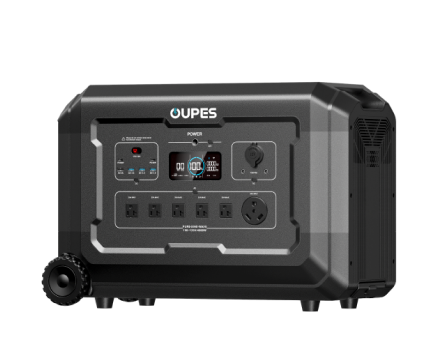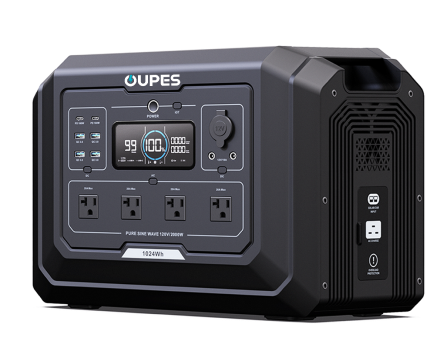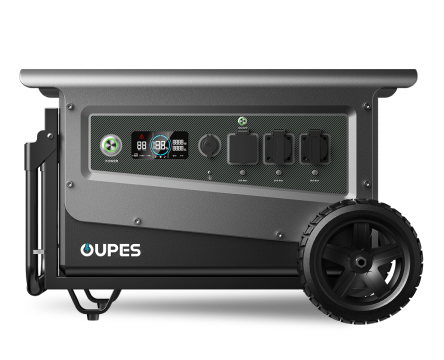
TL;DR / Key Takeaways
Choosing a home battery backup system involves assessing your essential loads, outage duration, and future needs. Key factors: battery capacity (kWh), continuous and surge output (kW), chemistry (e.g., lithium-ion vs lead-acid), efficiency, installation costs, and integration with solar or grid. Expert guides note that homeowners should match their usage profile and budget to the system’s specifications and installation requirements. :contentReference[oaicite:0]{index=0} By following the scenario-based steps below, you’ll be equipped to select a system that fits your home, supports your lifestyle, and gives reliable backup when you need it.
Introduction
Power outages are becoming more frequent and unpredictable due to extreme weather, aging grid infrastructure, and increased demand. Having a reliable home battery backup system means you won’t be left in the dark—or without refrigeration, heating, or communication—when the grid goes down. In this user-guided article, we’ll walk you through how to choose the right home battery backup system from your brand (OUPES), geared toward real-world scenarios. We’ll cover how to size it, what features to look for, what chemistry is best, how to factor in solar integration, and cost considerations. Whether you face short outages or need long-duration backup, this guide will help you make an informed decision.
Step 1: Understand Your Scenario & Backup Needs
Start by asking: **What do I need to power when the grid goes out?** Are you dealing with short power interruptions (1–3 hours), or are you preparing for multi-day outages? Here are two common scenarios:
Scenario A – Urban Home with Frequent Short Outages
You live in a city or suburb where outages last a few hours. You want to keep your refrigerator, lighting, router, and maybe a small heater or AC running until power returns. In this case, you need moderate capacity (say 2-5 kWh) and strong inverter output to handle loads, but you don’t necessarily need a full “whole-home” system.
Scenario B – Rural or Remote Home with Multi-Day Outages
You live in a rural area or face long outage durations due to storms or remote grid. You need to be self-sufficient—run a fridge, lights, communications, heating/cooling, maybe a well-pump or security system for 24 hours or more. In this scenario you’ll look for higher capacity (10 kWh+), solar recharging capability, and higher output inverters to power heavy loads.
Understanding your scenario helps set realistic expectations and size your backup system accordingly.
Step 2: Determine Your Loads and Runtime Requirements
To choose the right size system, you’ll need to estimate what you want to power and for how long:
- List your essential appliances (e.g., refrigerator, lights, router, heater or AC).
- Note their power consumption (watts) and how often they run (hours per outage).
- Calculate total energy required: **Watts × Hours = Watt-hours (Wh)**.
For example, if your fridge draws 200 W and runs 8 hours during an outage: 200 × 8 = 1,600 Wh (or 1.6 kWh). Add lighting and communication loads and you might total around 3–4 kWh for a short outage scenario.
Capacity Guidance Table
| Backup Scenario | Estimated Capacity Needed | Typical Load Examples |
|---|---|---|
| Short outage (urban) | 2-5 kWh | Fridge + router + lights + fan/heater |
| Medium outage (suburban) | 5-10 kWh | Add small AC, sump pump, moderate loads |
| Extended outage (rural/remotes) | 10-20 kWh+ | Full critical loads or multi-day backup |
Also factor in inverter losses (some energy lost converting DC to AC) and future growth. Guides indicate that you might need to oversize output and capacity to cover worst-case. :contentReference[oaicite:1]{index=1}
Step 3: Match Battery Chemistry & Efficiency
The type of battery matters for longevity, safety, and performance:
Common Battery Chemistries
- Lead-acid: Older, less expensive, shorter lifespan, lower usable capacity.
- Lithium-ion (Li-ion): Commonly used in home backups, high energy density, longer cycle life. :contentReference[oaicite:2]{index=2}
- LiFePO₄ (Lithium iron phosphate): Advanced lithium variant, excellent safety and lifespan.
Look for round-trip efficiency (percentage of stored energy you can use). A higher number means more usable energy. :contentReference[oaicite:3]{index=3}
Step 4: Evaluate Output Power & Surge Capacity
Battery capacity (kWh) is important—but so is inverter output (kW). Many home batteries can store energy but cannot supply the high power needed for certain appliances like HVAC, well pumps, or cooktops if the inverter is undersized. Check both:
- Continuous output (kW): The amount the system can supply continuously.
- Surge/peak output: Many appliances draw more when they start (motor start-up). Ensure inverter covers that.
Missing surge capacity can lead to tripped breakers or systems shutting down when heavy equipment starts. :contentReference[oaicite:4]{index=4}
Step 5: Consider Solar Integration & Charging Options
Many homeowners pair battery backup with solar panels—but a standalone battery system can also charge from the grid. According to authoritative guides, backup systems work even without solar. :contentReference[oaicite:5]{index=5} If you plan solar integration, consider:
- Solar input capability (W or kW) of the system.
- Charge controller/inverter compatibility.
- Mounting space and direction for solar panels.
- Possible future growth and modular expansion.
Step 6: Estimate Cost and Return on Investment
Cost varies widely depending on capacity, installation complexity, and features. Guides indicate home battery systems may cost thousands to tens of thousands of dollars. :contentReference[oaicite:6]{index=6} You should factor:
- Hardware cost.
- Installation (electrician, permits, integration with panel or grid).
- Maintenance and expected lifespan.
- Potential savings from avoided outages, lower electricity rates (if used for peak shifting), and incentives.
Although the primary driver may not be cost savings but protection and resilience, some users will analyze the payback based on how many hours of outages are avoided and what value that has for them.
Step 7: Compare Specifications of Candidate Systems
When comparing systems, set up a table with the following criteria:
| Specification | System A (Example) | System B (Example) |
|---|---|---|
| Battery Capacity (kWh) | 5 kWh | 10 kWh |
| Continuous Output (kW) | 3 kW | 6 kW |
| Surge Output (kW) | 6 kW | 12 kW |
| Battery Chemistry | Lithium-ion | LiFePO₄ |
| Solar Input Compatible (kW) | 1 kW | 2 kW |
| Estimated Cost | $7,000 | $12,000 |
| Warranty / Lifespan | 10 yrs / 5,000 cycles | 15 yrs / 8,000 cycles |
Using a table like this enables you to compare apples-to-apples. Key trade-offs will emerge: higher output & capacity cost more but offer greater resilience. Your brand, OUPES, can offer modular battery backup systems tailored to these varying needs—whether you choose compact or large capacity.
Step 8: Installation, Safety & Maintenance Considerations
Correct installation and ongoing maintenance are vital:
- Ensure the system is installed by a qualified electrician and meets local codes.
- Choose indoor or outdoor-rated units as appropriate (ventilation, temperature control matter).
- Battery systems work best in moderate climates; avoid extreme heat or cold exposure.
- Check wiring, mounting, and battery BMS (battery management system) status regularly.
- Test your system by simulating a power outage and checking if critical loads stay powered.
FAQ
1. Do I need a solar panel to use a home battery backup?
No. Home battery backups can be charged from the grid, offering backup power without solar. Solar simply adds independence and potential savings. :contentReference[oaicite:7]{index=7}
2. How large of a system do I need for a typical outage?
It depends on your loads and duration. For example, a battery of 5 kWh might cover fridge, lights, router for 4-6 hours. For longer coverage or heavier loads you may need 10 kWh or more. Use the capacity table and load calculations above.
3. What is a good lifespan for a home battery system?
Modern lithium-ion or LiFePO₄ systems often offer warranties of 10–15 years (or thousands of cycles). Proper usage and sizing improve lifespan.
4. Can I expand my battery backup later if needs grow?
Yes—many systems are modular. If you begin with a smaller capacity system and later add modules (or solar), you can grow your backup capacity.
5. Is a battery backup worth it for just one short outage per year?
Possibly, if the outage disrupts critical loads (medical devices, refrigeration, security). The perceived value may outweigh the cost. But if outages are rare and short, a smaller system or generator may suffice.
Conclusion
Choosing a home battery backup isn’t about picking the most powerful or expensive system—it’s about matching your home’s needs, outage risks, and budget. By identifying what critical loads you want protected, estimating how long you’ll need them powered, selecting appropriate capacity and output, and comparing specifications (capacity, output, chemistry, solar compatibility), you’ll arrive at a solution that provides peace of mind. With OUPES’s portfolio of systems, whether you need a compact backup for urban apartments or a high-capacity, solar-integrated system for rural homes, you can choose a system that fits your scenario. Installation, safety, and proper usage will ensure that when the lights go out, you stay powered.

